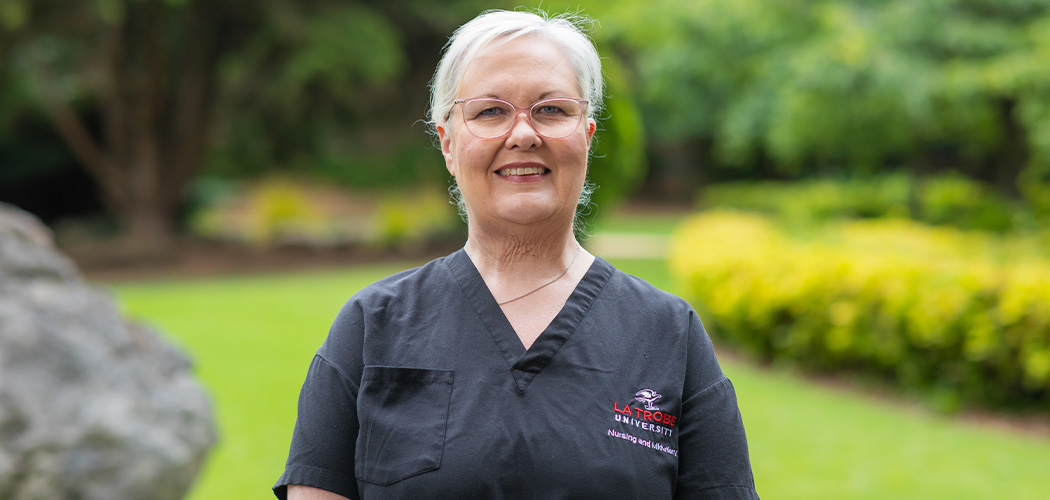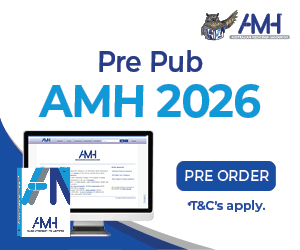Victorian registered nurse Sally Baker’s life changed dramatically after discovering she had lipoedema, a chronic health condition often mistaken for obesity or lymphoedema.
The connective tissue disorder, which mostly affects women, is characterised by abnormal growth of adipose tissue in the legs, buttocks and, sometimes, arms, resulting in a disproportionate body shape, often accompanied by pain, swelling and easy bruising.
Treatment from Associate Professor Ramin Shayan, a plastic and reconstructive surgeon transformed her life, freeing her from pain and the progressive loss of mobility, and inspiring her return to nursing after a 20-year break to support others with the same condition.
Re-entering the nursing profession proved challenging for Sally.
After continual roadblocks due to the time that had passed since she exited nursing, she eventually completed a fast-tracked nursing degree at La Trobe University, the same institution she graduated from back in the early 1990s.
One of the earliest university-educated nurses in Australia, Sally recalls the difficulties faced by nursing students, including limited acceptance in hospitals during placements, and minimal support from staff. During her early career, she worked at the Alfred Hospital’s burns unit.
“We [nursing students] weren’t accepted in the hospitals at all,” says Sally.
“The subjects and clinical placement hours were enormous, much more than they have now. And the attitude from staff was always ‘you are the college graduate’ type of thing, and processes weren’t really in place for clinical educators to support us.”
“I remember being quizzed on my first day by the nurse unit manager, or the charge nurse, about what I did, and didn’t know.”
Sally went on to work across a variety of roles during her nursing career, including as an associate nurse unit manager, nurse unit manager, and clinical educator.
After leaving nursing in 2001 to care for her adopted children with special needs, Sally felt a void.
“I hated walking away,” she recalls.
“I always felt like I was missing something. I really struggled with knowing and feeling I was still a nurse, but not having any right to say that anymore. And I was still doing quite intense nursing care for two special needs children who had multiple medical problems and had multiple surgeries with very rare conditions.”
Completing a Bachelor of Nursing Degree from La Trobe for a second time provided her with insight into the changes and advancements in the field, particularly in technology and education.
“Nursing at its core, has not changed. What has changed, is technology. But even the IV pumps haven’t changed much. They’re still pretty much the same as what I was using when I left.
“Easy access to regularly updated policies and procedures online is a great improvement as is the development of the National Safety and Quality Healthcare standards. Electronic Medical Records are a game changer.
“In terms of education in the university, I think that has really improved, with the simulations and the practice in the labs. I felt like students were going out into placements better prepared. And obviously, electronic medical records EMRs have made a huge difference.”
Sally lists learning and adapting to new technologies as the biggest hurdle she has had to overcome to re-enter the profession.
“I never really had to use a computer. When I left, we could look up blood results on the computer and that was about it. Getting my head around doing things on a computer and the technology involved there, and the immediate access to information, was interesting.”
Now working as a lymphoedema and lipoedema support nurse alongside Associate Professor Shayan, Sally is fulfilling her dream of helping women with these conditions.
She encourages women with disproportionate body shapes to explore the possibility of having lipoedema as she seeks to raise awareness about the condition.
Despite inroads, there remains a shortage of surgeons like Associate Professor Shayan who specialise in treating lipoedema, leading to 18-month average wait times for consultations.
“The average age for finding out about lipoedema is women’s in their 50s, but it often starts in puberty. So, they’ve suffered all those years with no diagnosis. When they get to Mr Shayan, they’re desperate for help. Now I can start working with women at the time of referral and support them through the entire process of managing and treating lipoedema.”
As qualified as lymphoedema practitioner, Sally shared her lived experience with patients, providing them with much-needed understanding and support.
“We’re already getting amazing feedback regarding how helpful it is to have someone who understands, because these women are gaslighted by the health profession their entire lives and told they’re making it up, or that they just need to go away and eat less. There’s a lot of trauma associated with this disease and they don’t trust the health system. So, being able to talk to someone who’s done it, and been through it, is having excellent results.”
Having come full circle, she emphasises the importance of believing in oneself. “My advice would be to believe in yourself. Your life experience is very valuable and as a nurse there are lots of opportunities – you don’t have to follow the usual path.”









3 Responses
I myself am a long time sufferer of Lipodema and I have had the opportunity to meet Sal Baker and only 8 days ago I had my first leg surgery with Dr Ramin which I’m over the moon about as I already know this is a turning point in my life !! Sally has been so supportive and we are truly blessed to have Dr Ramin and his expert team to support us through our journey of treatment available and awareness of such a barbaric disorder that is sadly not yet recognised in the health system where Medicare are funding treatments . I was fortunate enough to access my superannuation to find my surgery along with private health but sadly that’s not the case for a lot of sufferers . I am forever grateful to Sal and those who trailblazer the research and knowledge of Lipodema and lymphoedema. Hopefully someday there will be a lot more support and recognition of the disease and even better still , a cure 🙏
Well done Sally! An inspiration to us all
Im a nurse who has had to stop nursing due to the pain and mobility problems from my lipoedema. Alas surgery is far out of my budget so I have to just manage conservatively until i can access this treatment.